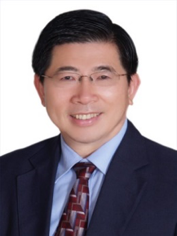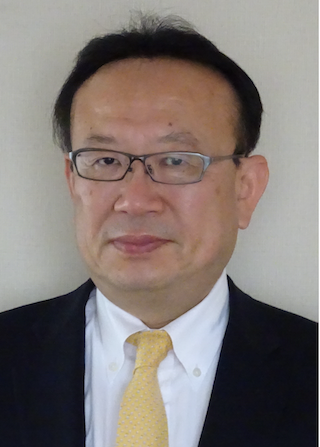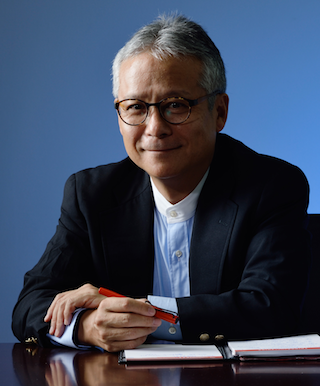Plenary Lectures
- Plenary Lecture 1: 13:30-14:30, Dec. 13
- Plenary Lecture 2: 12:30-13:30, Dec. 14
- Plenary Lecture 3: 11:15-12:15, Dec. 15
Plenary Lecture 1:
The Key Essences of Industry 4.0 as the Best Model of System Integration: From the Vision to Realization towards Innovation Economy
 Prof. Dr.-Ing Ren C. Luo
Prof. Dr.-Ing Ren C. Luo
Chair Professor, National Taiwan University
Chief Technology Officer, ASUS Computer Inc.
(Taiwan)
Abstract:
Germany has established sustainable leading Industry 4.0 vision with cyber physical system (CPS) as the core technology which integrates computation, communication and control technologies along with intelligent robotics, internet of things, big dada and cloud computing. It intends to solve problems for industrial production needs on exceeded orders, excess inventory or less as well as not timed production. It is expected to enhance their international competitiveness, and create high added value of high pay job opportunities. In this talk, issues and approaches of the core spirits of the fourth industrial revolution as the best practices of System Integration will be addressed. The impact to the future of design innovation and service innovation resulting from CPS system and robot-integrated manufacturing automation will also be presented.
Short Bio:
Dr. Ren C. Luo received both Dipl.-Ing, and Dr.-Ing. Degree in EE from the Technische Universitaet Berlin, Germany. He is currently a Chief Technology Officer of ASUS Computer Inc. and Irving T. Ho Chair and Life Distinguished Professor at National Taiwan University. He is EIC of IEEE Transactions on Industrial Informatics (Impact Factor 4.78), and a member of EU Echord Industrial Advisory Board. He served two terms as President of National Chung Cheng University in Taiwan and Founding President of Robotics Society of Taiwan. He was a tenure Full Professor of Department of ECE at NC State University, USA and Toshiba Chair Professor at U of Tokyo, Japan. His research interests include sensor-based intelligent robotic sensor and control systems, multi-sensor fusion and integration, computer vision, 3D printing additive manufacturing technologies. He has authored more than 450 papers on these topics, which have been published in refereed international technical journals and refereed conference proceedings. He also holds more than 25 international patents.
Dr. Luo received IEEE Eugean Mittlemann Outstanding Research Achievement Award, IEEE IROS Harashima Innovative Technologies Award; ALCOA Company Foundation Outstanding Engineering Research Award, USA; Ministry of Science and Technology Outstanding Research Awards; TECO Company Outstanding Science and Technology Research Achievement Award in Taiwan. Dr. Luo was Co-Editor-in-Chief of IEEE Transactions on Industrial Electronics (Impact Factor 6.50) and served 5 years as Editor-in-Chief of IEEE/ASME Transactions on Mechatronics (Impact Factor 3.75). From 2000-2001 he served as President of IEEE Industrial Electronics Society. He also served as President of Chinese Institute of Automation Engineers, Program Director of Automation Technology Division, Ministry of Science and Technology; Adviser of Ministry of Economics Affairs and Science and Technology Adviser for the Prime Minister in Taiwan.
In addition to the contributions to various academic, industrial and governmental professional services in Taiwan, Dr. Luo also served as referee and final review panel member for numerous international organizations and countries for the evaluation and assessment of national competitive grants program in major cross-disciplinary research project in the field of intelligent robotics automation ,mechatronics and advanced manufacturing systems, such as USA, European Union, Austria, Swiss, Japan, Canada, Australia, Singapore, Hong Kong etc., Dr. Luo is a Fellow of IEEE and a Fellow of IET.
Plenary Lecture 2:
Current status and perspectives for smart agriculture
 Prof. Noboru Noguchi
Prof. Noboru Noguchi
Professor, Vehicle Robotics Laboratory, Division of Bioproduction Engineering, Research Faculty of Agriculture, Hokkaido University (JAPAN)
Abstract:
Agriculture in developed countries after the Industrial Revolution has tended to favor increases in energy input through the use of larger tractors and increased chemical and fertilizer application. Although this agricultural technology has negative societal and environmental implications, it has supported food for rapidly increasing human population. In western countries, “sustainable agriculture” was developed to reduce the environmental impact of production agriculture. At the same time, the global agricultural workforce continues to shrink; each worker is responsible for greater areas of land. Simply continuing the current trend toward larger and heavier equipment is not the solution. A new mode of thought, a new agricultural technology is required for the future. Smart agricultural technologies including robotics and ICT are one potential solution. Sensors are an essential part of smart agriculture. The information gathered through machine vision and other sensors such as GPS can be used to create field management schedules for chemical application, cultivation and harvest. This presentation will give current status and perspectives for smart agriculture. Especially, the most advanced technologies of unmanned agricultural production system will be addressed here.
Short Bio:
He received his B. S. degree, M. S. degree, and Doctor of Agricultural Engineering in 1985, 1987, and 1990, respectively in agricultural engineering all from Hokkaido University. In 1990, he joined Hokkaido University as an assistant professor, in 1997 as an associate professor. Since 2004, he has been a professor of research faculty of agriculture at Hokkaido University. His research activities include agricultural robotics and precision agriculture. He has actively collaborated abroad; an adjunct associate professor at University of Illinois fro 1998 to 2000, a Ding Ying guest professor at South China Agricultural University since 2010, a guest professor at China Agricultural University since 2011, and a member of Club of Bologna since 2010. His achievement has been praised, and he received many prizes; Academic Award of Japanese Society of Agricultural Informatics in 2006, President Award for Research Achievements, Hokkaido University in 2012, Distinguished Visiting Fellowship Award form Royal Academy of Engineering (UK) in 2012, Japan Prize of Agricultural Engineering from Japan Association of International Commission of Agricultural and Biosystems Engineering in 2015, Japan Prize of Agricultural Science from Association of Japan Agricultural Scientific Societies in 2016.
Plenary Lecture 3:
TRANSFORM: Beyond Pixels, Towards Radical Atoms
 Prof. Hiroshi Ishii
Prof. Hiroshi Ishii
Jerome B. Wiesner Professor of Media Arts and Sciences at the MIT Media Lab. (USA)
Abstract:
Whereas today's mainstream Human Computer Interaction (HCI) research addresses functional concerns – the needs of users, practical applications, and usability evaluation – Tangible Bits and Radical Atoms are driven by vision. This is because today's technologies will become obsolete in one year, and today's applications will be replaced in 10 years, but true visions – we believe – can last longer than 100 years.
Tangible Bits seeks to realize seamless interfaces between humans, digital information, and the physical environment by giving physical form to digital information, making bits directly manipulable and perceptible. Our goal is to invent new design media for artistic expression as well as for scientific analysis, taking advantage of the richness of human senses and skills – as developed through our lifetime of interaction with the physical world – as well as the computational reflection enabled by real-time sensing and digital feedback.
Radical Atoms takes a leap beyond Tangible Bits by assuming a hypothetical generation of materials that can change form and properties dynamically, becoming as reconfigurable as pixels on a screen. Radical Atoms is the future material that can transform its’ shape, conform to constraints, and inform the users of their affordances. Radical Atoms is a vision for the future of human-material interaction, in which all digital information has a physical manifestation so that we can interact directly with it.
I will present the trajectory of our vision-driven design research from Tangible Bits towards Radical Atoms, and a variety of interaction design projects that were presented and exhibited in Media Arts, Design, and Science communities.
Short Bio:
Hiroshi Ishii is a Jerome B. Wiesner Professor of Media Arts and Sciences at the MIT Media Lab. He was named Associate Director at the Media Lab in May 2008. He is the director of the Tangible Media Group that he founded in 1995 to pursue new visions of Human Computer Interaction (HCI). Ishii and his team have presented their visions at a variety of scientific, design and artistic venues (including ACM SIGCHI, SIGGRAPH, Cooper Hewitt Design Museum, Milan Design Week, Cannes Lions Festival, Aspen Ideas Festival, Industrial Design Society of America, AIGA, Ars Electronica, Centre Pompidou, Victoria and Albert Museum and NTT ICC) emphasizing that the development of vision requires the rigors of both scientific and artistic review. In 2006 Ishii was elected to the CHI Academy by ACM SIGCHI. Prior to joining the MIT Media Lab from 1988-1994, Ishii led a CSCW research group at NTT Human Interface Laboratories Japan, where he and his team invented the TeamWorkStation and the ClearBoard.
